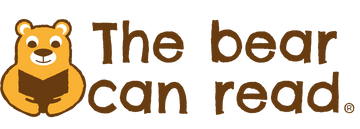How schools teach reading: A guide to phonics
Don’t be fazed by phonics! It might sound complicated, but the method schools use to teach reading is actually pretty simple and there’s plenty you can do to help your child at home, too. Our expert at the Bear Can Read is here to help you understand phonics so you can provide your children with the support they need to become confident readers.
Once upon a time, teachers used lots of different methods to teach children to read. But these days, most schools use the same system: phonics. From their first few weeks in Nursery or Reception Class right the way through Year 1 and into Year 2, your child will be using their phonics skills as they learn to read.
So what is phonics?
Essentially, phonics means using letter sounds to help read words. Sounds simple, doesn’t it? If you take a short word like cat, you can sound it out like this: c-a-t. Then you can blend those sounds together to read the whole word: cat.
At the start of learning to read, children are taught just one sound for each letter of the alphabet. They learn to read simple words by sounding out each separate sound and blending the sounds together to read the word: c-a-t, cat, d-o-g, dog.
Later on, they are taught the sounds made by other letter combinations. They’ll learn that ‘t’ and ‘h’ together make the ‘th’ sound in thin, and that ‘a’ and ‘i’ together make the long ‘ai’ sound in rain.
Later still, children learn that there’s often more than one way of pronouncing each letter combination – so the letters ‘e’ and ‘a’ together sound quite different in the words sea and head. And the same sounds can often be written with lots of different letter combinations – so the long ‘i’ sound is spelled differently in all these words: right, child, like, pie, my.
English is a funny language, and not all words stick to the phonic rules! This includes some of the commonest and most useful words – like of, the, their, one and are. So from the earliest stages, children are also taught how to read these ultra-handy but ultra-tricky words. They learn how to recognise them on sight without sounding them out and blending them. They learn how to spell them, too!
Phonic stages and ages
Wondering what to expect as your child progresses? Here’s an overview of what they’ll be learning each year at school.
Preschool and nursery
At the very earliest stages, phonics is all about listening and copying. Preschool and nursery children learn to listen carefully to a pattern of sounds and copy it. They have fun making animal and vehicle noises, listen out for rhyming words, sing and say high and low sounds, join in with songs and nursery rhymes, and generally start tuning in their ears to the sounds all around them. This will help them pick out the sounds in words when they start to learn to read.
Reception
In Reception Class, children start learning the sounds that letters make, and begin to read simple words. They learn their letters in a set sequence (usually starting with the letters s, a, t, p, i, n) and at first, they learn one sound for each letter. By the end of the Reception year they will know one sound for each letter of the alphabet as well as the sounds for lots of common letter combinations – ‘ch’ as in chip, ‘ng’ as in king, ‘ai’ as in rain, ‘igh’ as in night, and many more.
At this point, your child will be able to read lots of simple words – and they’ll also know some very useful tricky words like you, me, of, the and are.
Year 1
During Year 1, children learn to read increasingly complex words with lots of different spelling patterns. They’ll carry on practising the phonics they learnt in Reception, but they’ll also learn words where the same sound is spelled different ways. Children find out that the long ‘o’ sound is spelled differently in words like road, hope, mango, old and toe. Or that the letters ‘ear’ sound quite different in the words hear, earth and heart. They’ll find out that the ‘s’ sound is spelled different ways in words like sit, scientist and whistle.
On top of that, they'll also keep on learning useful common tricky words like their, were and people, that can’t be sounded out using phonics.
By the end of Year 1, your child will know how to read most common words in English. There’s a lot to learn this year, and most children still need to keep practising their phonics as they go through Year 2.
Year 2
Year 2 is all about practice! Most schools finish with formal phonics teaching in Year 1, and some children will be fluent, independent readers by the start of Year 2. Don’t panic if your child isn’t quite flying as a reader yet, though. This is very common! Most children need to keep practising their phonics and building up their reading stamina throughout Year 2.
The right reading material at the right time
Does it all sound a bit overwhelming? Don't worry, you can support your child's reading at home without being a phonics expert. Our book subscription for kids comes with personalised bundles that follow the school phonics progression system meaning our materials contain the same sounds your children will be learning at school. Using our expertise, we provide you with the right reading material at the right time. Learn more about our reading bundles here.


